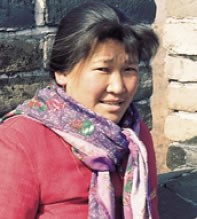Putian people are often stereotyped by other Chinese as heroic and athletic people. Many of China's best track and field stars come from Putian. In Southeast Asia the Putian are known as the Hinghua.
The Yuan (Mongol) Dynasty (1271-1368): In 1213, the Mongols, led by Genghis Khan, broke through the Great Wall, which had been designed to prevent them from entering China. The Mongols swept all opposition before them, winning more territory than any other kingdom in the history of world. Their realm stretched from Southeast Asia to Hungary in Europe. The Mongol armies were brutal, killing and plundering unmercifully wherever they went.
We know very little about the lives of the Putian Chinese people.
The implementation of Communist policies resulted in a ban on all religious activity across China between 1966 and 1976. Thousands of temples, mosques, and churches were smashed to the ground, and believers were forced to practice their faith in secrecy.
The Nestorian church disappeared from China in the fourteenth century, leaving almost no trace of its existence. "This was the second disappearance of Christianity from China, and when it returned two hundred years later, the next wave of Christians seemed largely unaware that there had ever been Christians there before them."
The gospel has returned to China, and today there are probably 100,000 Putian Chinese Christians.
The Putian Chinese church needs to be revived and purified.
Pray for Putian Chinese disciples to disciple others.
Pray for Putian Chinese churches to exhibit the fruit of the Holy Spirit, drawing others to the Lord.
Pray for the Lord to abundantly provide for the Putian Chinese as a testimony of his goodness and power.
Scripture Prayers for the Han Chinese, Putian in China.
Operation China, Asia Harvest, Copyrighted Used with permission.
| Profile Source: Joshua Project |










